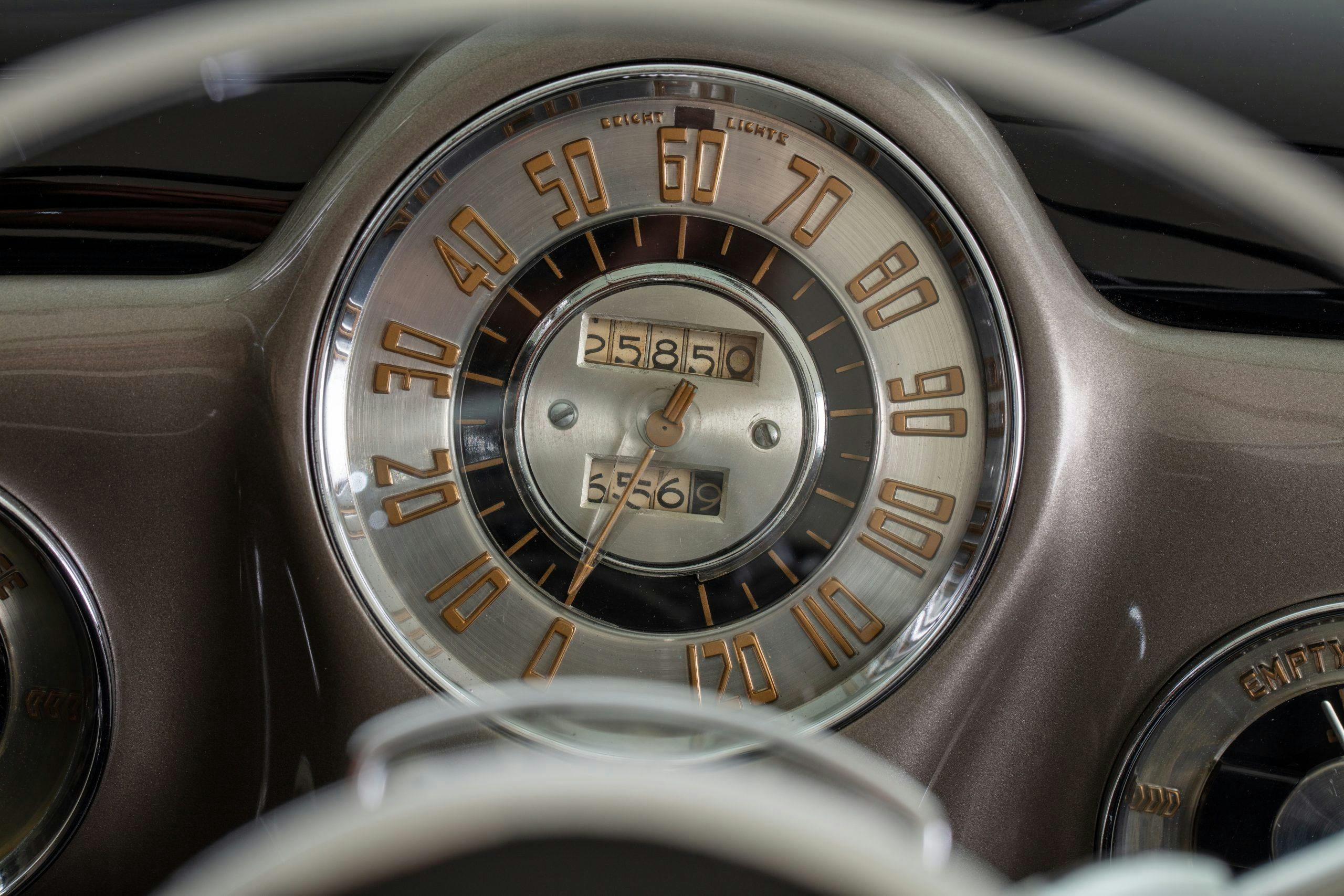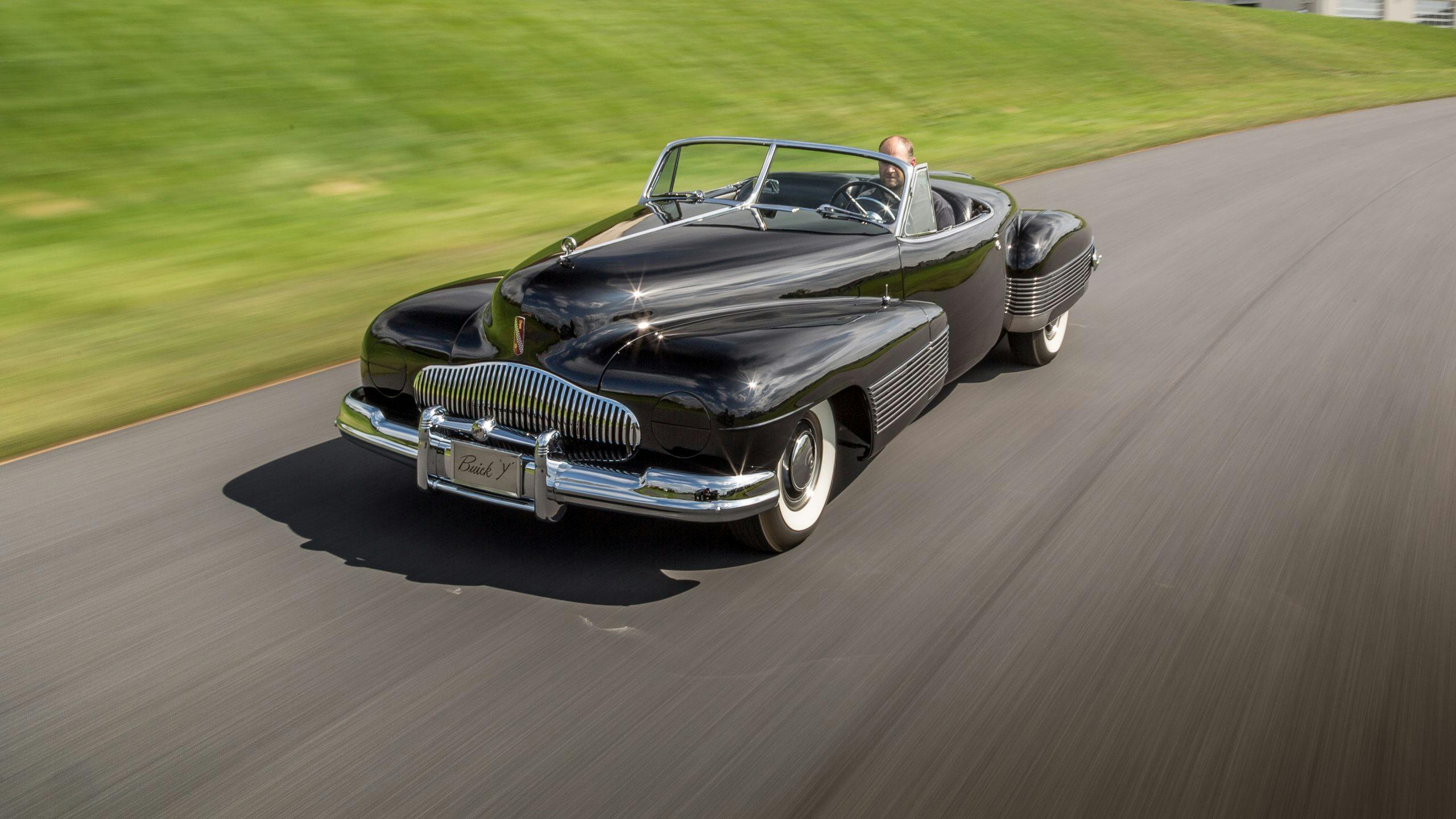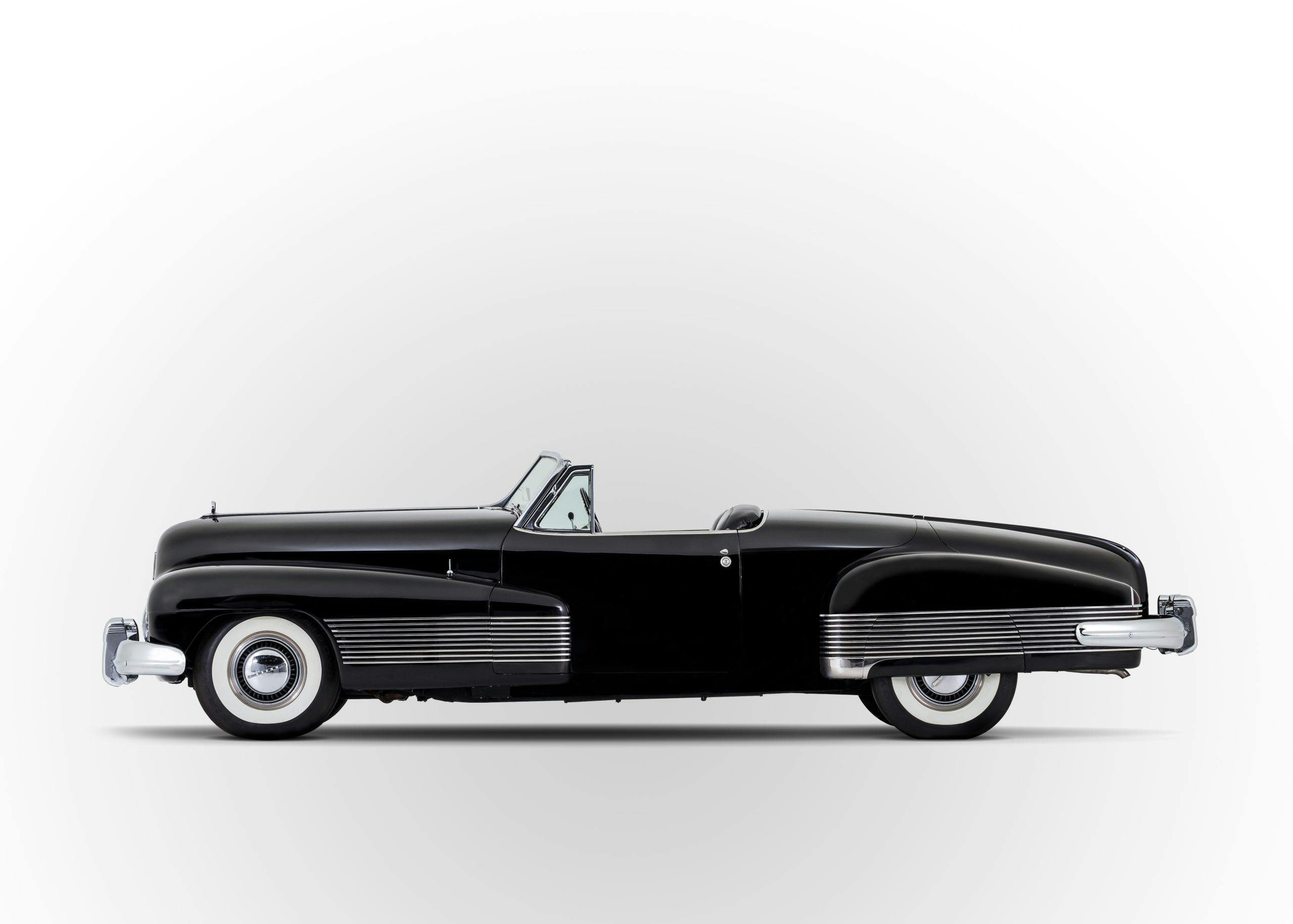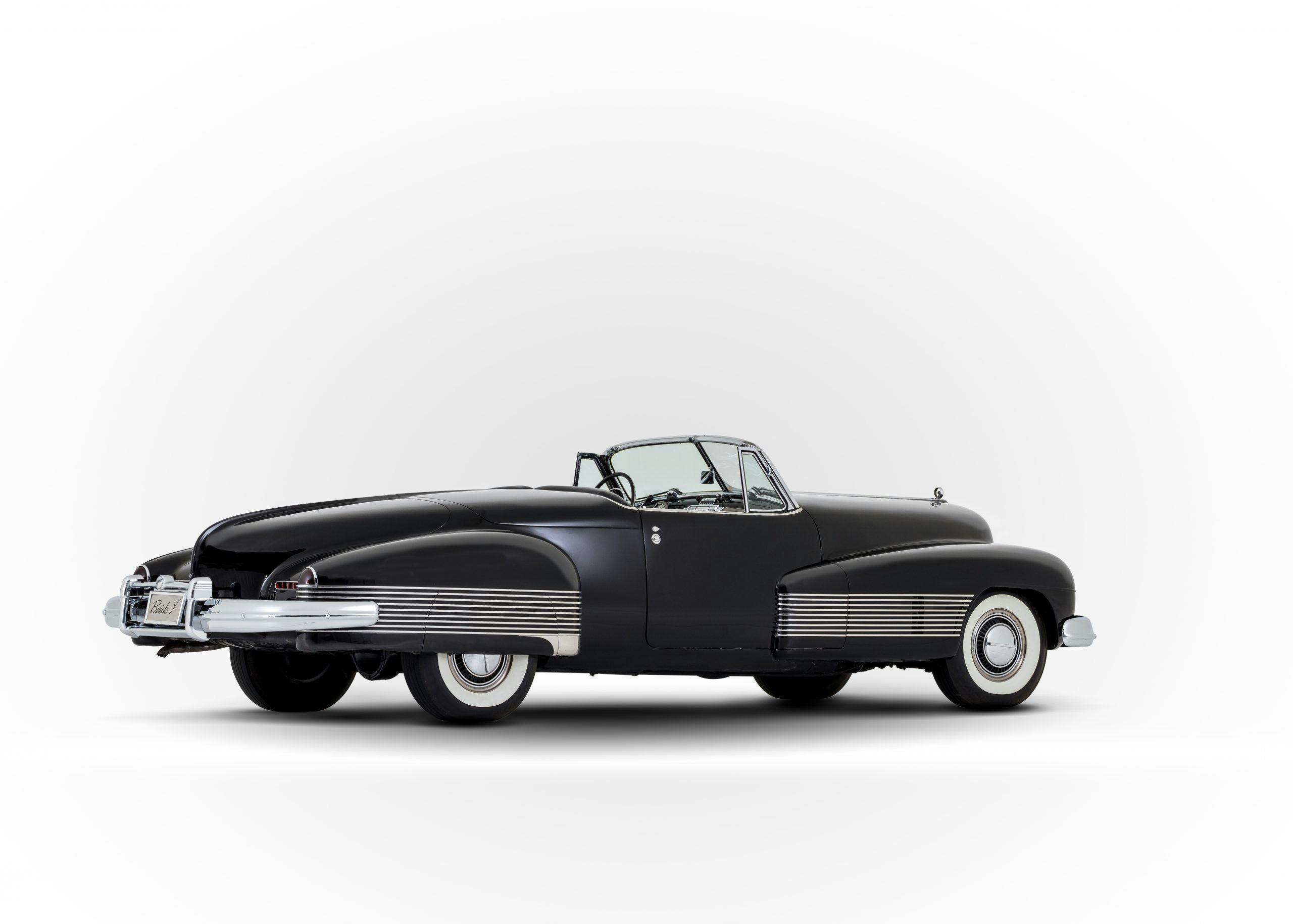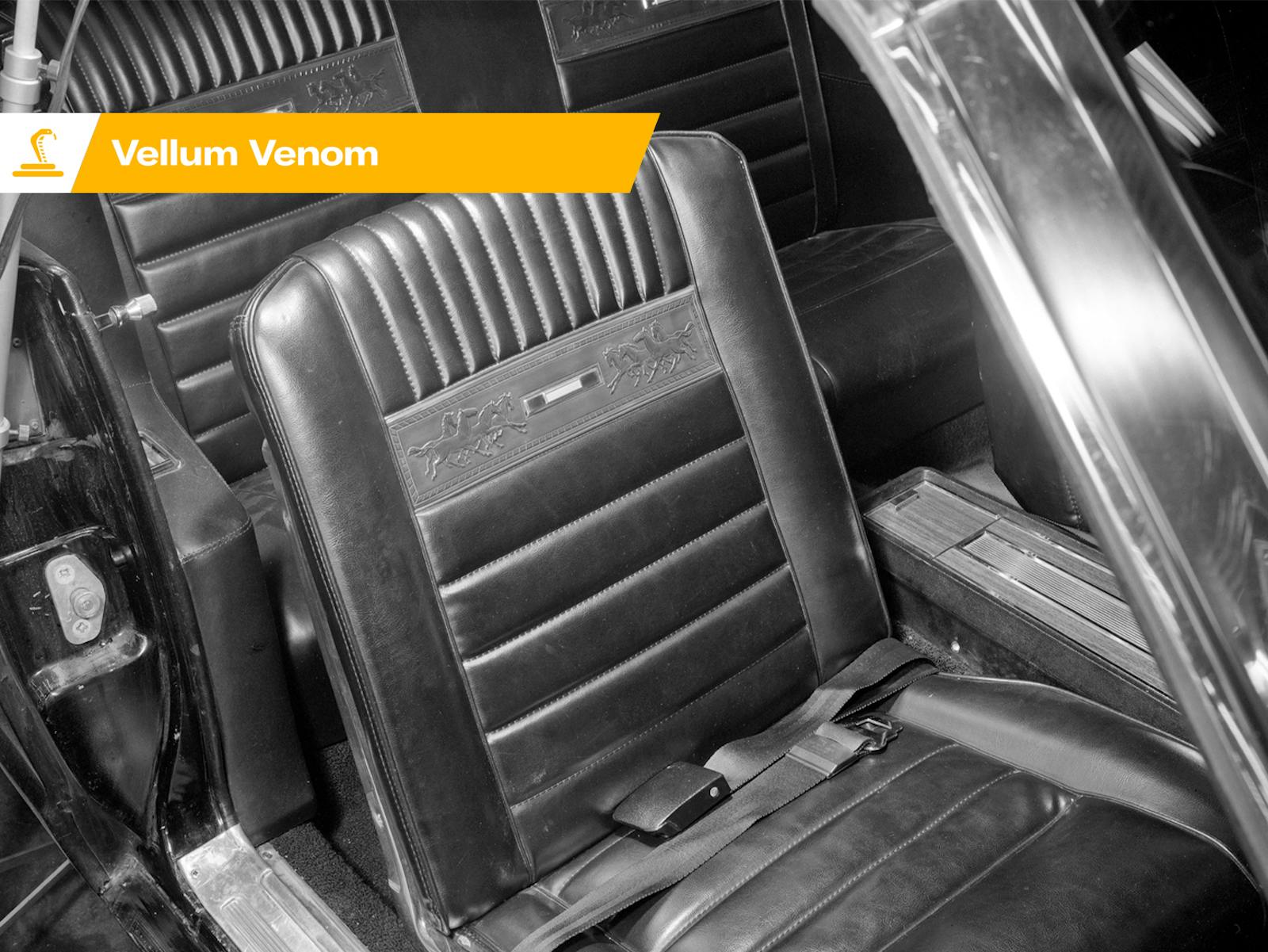The day I drove the 1938 Buick Y-Job
The Buick Y-Job is one of the concept cars General Motors is displaying at the inaugural Detroit Concours d’Elegance between 10 a.m. and 4 p.m. on Sunday, September 18, 2022. Joining them will be a selection of 112 historically significant vehicles in 15 different classes.
You don’t quite sit in this car as much as you sit on it. That’s the way they built cars in 1938, even cars as revolutionary as the Buick Y-Job, regarded as the first true concept car—a “dream car” built solely to amaze, to entertain, to generate shock and awe decades before those terms were applied to war.
The Y-Job succeeded. It changed the American automobile industry. It caused companies and their designers to think not only about next year’s models but also about cars that might be sold 10 years down the road. It also cemented the reputation of General Motors designer Harley Earl, long before he would be recognized for groundbreaking models such as the Chevrolet Corvette or Buick LeSabre.
As a conductor gets credit for the orchestra’s performance, Earl did not single-handedly design the Y-Job. As head of GM’s design department, however, he certainly left his fingerprints on the project. Larger than life—Earl was 6 feet, 4 inches tall and weighed 235 pounds—he drove the Y-Job around Detroit on nice days, a rolling advertisement of how cocky and dominant the GM design team was then.
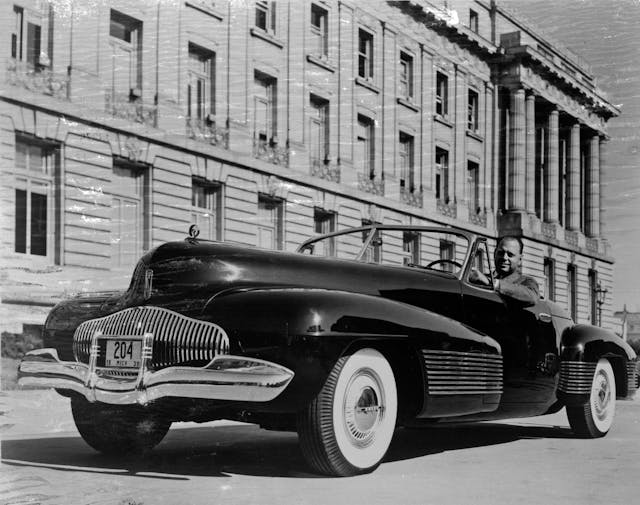
Earl died in 1969, but so influential is his legacy that he was “reincarnated” for a series of Buick print and TV ads in 2002. Maybe you remember them. “I’m Harley Earl,” the sharp-dressed ghost says, “and I’m here to build you a great car.” Actually, it was character actor John Diehl, fresh off an Emmy-caliber performance on the FX network drama The Shield. It’s unclear how influential the commercials were or weren’t, but the fact that Earl was still considered important enough to use in a marketing campaign decades after his prime is telling.
Harley J. Earl was born in Hollywood, California. He spent his early career custom-building cars for celebrities such as movie stars Tom Mix and Fatty Arbuckle (Google them, children). When he was hired by GM, he took Detroit by storm, bringing his flashy suits, two-toned shoes, and gregarious personality to one of the country’s most conservative companies. According to one biography, he would make a pronouncement at a company meeting, then say: “If you disagree, stand up, so we can all get a look at the SOB!” He worked for GM until December 1959. He retired to Palm Beach, Florida, and died 10 years later after suffering a stroke.
As part of the Amelia Island Concours d’Elegance near Jacksonville, Florida, in March of 2003—almost 20 years ago—GM brought some concept cars, new and old, for a handful of invitees to drive at a rented-out corner of a mostly abandoned military base. That GM would hand me the keys to one-of-a-kind concepts seemed as unlikely then as it does now. I recall being impressed with every one—it’s always a treat to drive a concept—but I’ll be damned if I can remember any of them.

I remember the Y-Job, though. It was like this:
Even 65 years after its debut, the Y-Job is king, sitting low on its haunches, top down, ebony paint gleaming in the Florida sun.
The Y-Job—the name has no particular meaning; it was simply the particular “job” Earl and crew were working on at the time—is a massive convertible with one bench seat and, behind it, an enormous trunk. The headlamps are retractable, a feature likely inspired by the Cord 812. There are no running boards. The convertible top is power-operated and stowed beneath a metal cover. The car smells of leather, vintage carpet, and for an imaginary second, my grandfather’s cigars.
Windows controls are electric. Door handles are push-buttons. Tiny 13-inch wheels seem lost inside the huge tires. Fenders flow into the doors, and bumpers are integrated into the body design—the Y-Job does not look as if it were assembled from a bunch of random, individually designed pieces like many cars of its day, but as if it were born in one huge, solid form.
“Huge” is a watchword. The wheelbase is 125.8 inches, and overall length 208.4. A standard 2003 Cadillac Escalade, by comparison, has a 116-inch wheelbase and is 198.9 inches long.
Under the Y-Job’s hood is a 320-cubic-inch, 141-horsepower Buick “straight eight” engine. The transmission is an automatic, sort of—use the column shifter to shift into a low gear from a standing start, then gently shift into a higher gear, and stay there.

Perched on the bench seat, I start the engine. Get rolling in one gear, then shift. The exhaust note is a pleasant burble, a sound familiar from so many old movies.
I can’t go fast, because these tires, while new, cost a fortune, and have to be specially made. Ease into a corner, and the engine dies for a moment, as if the carburetor forgets what it was doing, then remembers. That’s fine: This is a not a car that needs to be driven quickly, even if you could.
Those of us who think cars have souls and personalities and karma might believe that the Y-Job, cooped up on display stands in museums literally for decades, is enjoying the fresh air and the chance to stretch its long legs. It is undoubtedly one of the world’s most valuable cars—it would be very difficult to get a credible estimate on exactly how many millions it would be worth if GM decided to sell it—but today, it’s just a big convertible, cruising on a road in Florida, top down, occupant grinning.
Check out the Hagerty Media homepage so you don’t miss a single story, or better yet, bookmark us.

